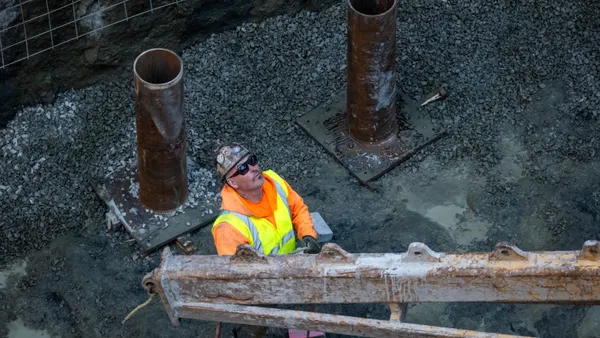Dive Brief:
-
Existing-home sales dipped 2.8% in December to a seasonally adjusted annual rate of 5.49 million from an upward-revised rate of 5.65 million in November, due to continuing affordability concerns and historically depressed inventory, according to the National Association of Realtors.
-
Despite the month’s deflation, the category — which includes single-family homes, townhomes, condominiums and co-ops — closed out 2016 with sales at their highest level in a decade. The sector posted an annual rate of 5.45 million sales in 2016, up from 2015’s 5.25 million.
- The median existing home sales price in December was $232,200, up 4% from a year ago and representing the 58th-straight month of year-over-year gains. Inventory dropped for the 19th month in a row, with unsold properties at a 3.6-month supply, down from 3.9 months a year ago.
Dive Insight:
December’s report surprised analysts who had forecast a more modest decline with existing-home sales dropping 1.1% to an annual rate of 5.52 million sales, according to Reuters. And while sales have reached a 10-year high, the numbers suggest the market could be bracing for a slowdown in 2017, fueled by tight inventory, rising prices and increasing mortgage rates.
While the industry sets its eyes on a new presidential administration, an executive action by President Donald Trump suspending a recent 25-basis-point decrease in the Federal Housing Administration’s mortgage insurance premium could dampen existing home sales by keeping as many as 40,000 homebuyers out of the market this year.
First-time buyers are one group that is sure to be affected by the policy move. This group made up 32% of existing-home sales in December, flat from November and the year-ago mark.
"Constrained inventory in many areas and climbing rents, home prices and mortgage rates means it's not getting any easier to be a first-time buyer," NAR Chief Economist Lawrence Yun said in a statement. "It'll take more entry-level supply, continued job gains and even stronger wage growth for first-timers to make up a greater share of the market."
An increase in new construction could help offset tight inventories and deflate prices for buyers looking to enter the market. But mortgage rate hikes late last year have some industry observers concerned that new buyers will be unable to afford a down payment while new residential construction activity is needed to bolster inventory and soften prices.
While builder confidence declined slightly this month, the National Association of Home Builders remains optimistic about the future of new single-family construction in the coming year. Housing starts, in turn, saw an uptick in December with single-family starts tapering 4% from November to an annual rate of 795,000 starts while multifamily starts swung back 53.9% to a rate of 417,000.












